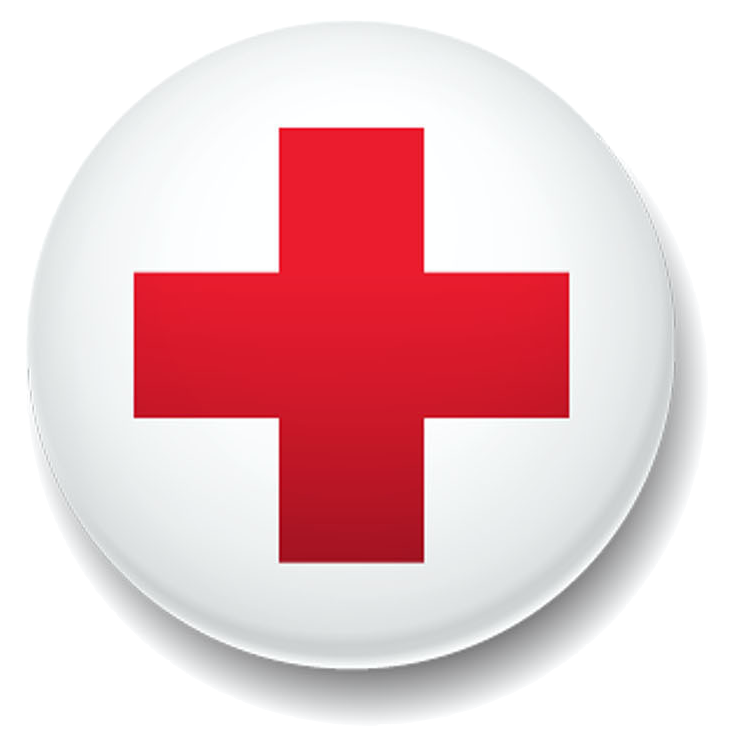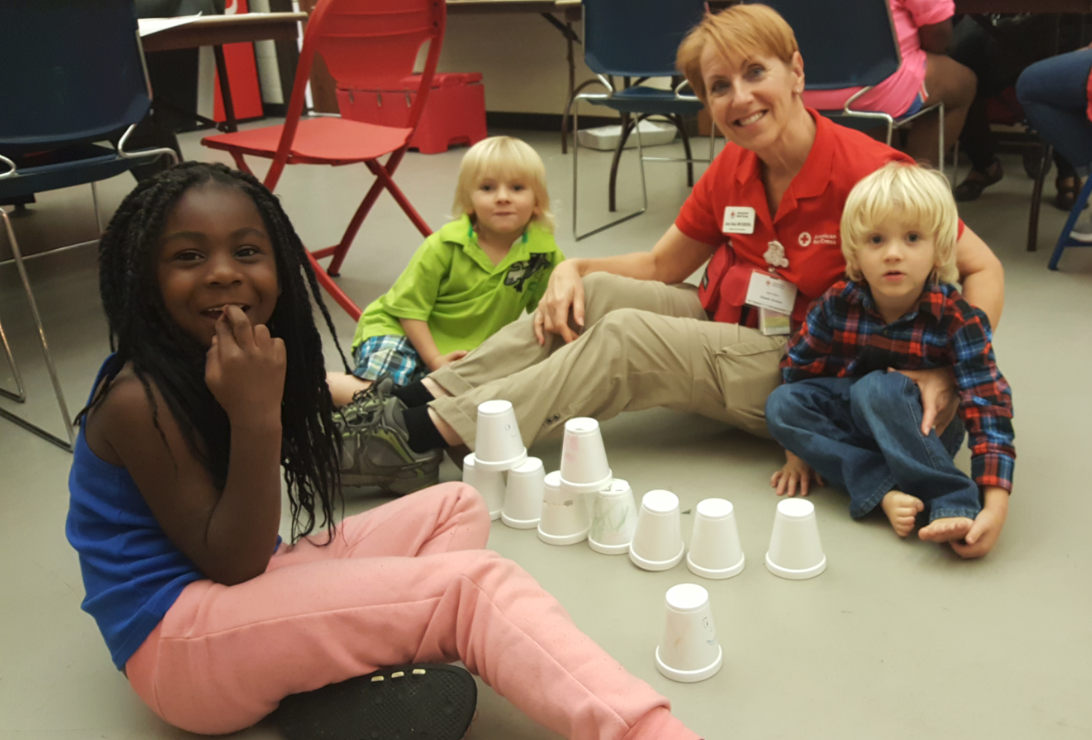By Jarrett Barrios, CEO, Red Cross Los Angeles
It’s been quite the American Red Cross year in Los Angeles, indeed! Many Red Crossers sometimes only have visibility into their slice of the work in our Region, so I thought I’d provide a summary of some of our highlights this year.
First Aid Stations and Training Services
For more than 40 years, the Red Cross has supported the Tournament of Roses by operating the first aid stations along the route and in the pre- and post-parade areas. This extraordinary effort requires almost 200 volunteers in a variety of roles on parade day.
In 2018, changes in national management of certification programs for first aid volunteers required all volunteers go through a laborious recertification process. For a while, these changes threatened the continuity of the program, but the dedication of the volunteer leaders, led by Pat Mulcahy, Katy Gould, Mac Dulgar, Randy Ferman, Paul Dutton, Territory 2 Disaster Program Specialist Jennifer Dutton and many others, allowed us to ensure certified volunteers will continue to staff the stations. For their amazing dedication, these first aid station volunteers were recognized with a special award at the 2019 Volunteer Excellence Awards.
At the Parade on Jan. 1, we are excited that once again LA volunteers will staff the first aid stations and, in 2020, that our volunteers will return to instructing EMR courses, facilitating the training and preparing these valued volunteers. Many think their only effort is the Rose Parade, but Red Cross volunteers staff first aid stations at more than 30 events during the course of the year.
Realignment into new Red Cross Regions
Many of us have heard the term “One Red Cross” (ORC) in the past couple years. It has been applied to so many situations that it has become a mantra applied to many aspects of our work. The origin of the term comes from the national, multi-year effort to rejoin aspects of our biomedical services operation to the humanitarian services of the organization.
In the early ’90s, Biomed was spun off to operate as a separate organization. This was done to protect the Red Cross at a time when many blood banks were being bankrupted by lawsuits for providing contaminated blood to patients. In recent years, leaders have recognized that we could do a better job at collecting blood if we engaged the full force of Red Cross and its humanitarian mission. This recognition was the birth of ORC.
During the past couple years, our region’s Volunteer Services team has assumed management of all recruitment of biomed volunteers, including volunteer ambassadors, blood drive nurses and drivers to take blood to hospitals. (Did you know that we will save $20 million nationally this year because of volunteer drivers? That’s $20 million that we can spend on expanding disaster relief and other programs. If you know someone who would like to become a volunteer driver for Red Cross, please share this link with them.)
We are also moving toward an integrated model of blood drive recruitment and stewardship. This past summer there was a campaign “competition” between all Red Cross Humanitarian Regions to identify new blood drives. In LA, our executive directors, fundraisers and faith-based and youth programs all joined together to secure 59 new blood drives – No. 1 in the country! Recruiting drives will become part of the daily work of these teams in the coming year, so this was a great dry run for us, and it is another example of how our work in humanitarian service complements efforts with Biomed.
The biggest challenge for ORC has been realigning the Biomed and Humanitarian services regional boundaries so that they are coterminous. After much effort, this past summer new regional boundaries were released. One result was the consolidation of two regions to our south, Desert to the Sea and San Diego, into a single region that will be called Southern California. In our region, we will lose Inyo, Mono and the portion of Kern counties, ceding them to Central California. These new regional lines take effect on April 1, 2020.
Disasters in Los Angeles, Large and Small
Did you feel the shaking on July 4? Well, if you lived in Antelope Valley or eastern Kern County, you most certainly did. At its epicenter near Ridgecrest, the 6.4 quake was followed the next day by a 7.1 temblor. Indeed, many of us in other parts of LA County felt it, too, with photos making the rounds of skyscrapers swaying in downtown and some historic structures reporting damage.
Our response was our region’s largest earthquake response since Northridge in 1994. Based out of Ridgecrest, relief and recovery efforts extended through the high desert up to China Lake and down to Edwards Air Force Base. Our sister regions of Central California and Desert to the Sea also responded to towns in their regions affected by the quake.
In terms of disaster responses, wildfires came a close second this year with the Saddleridge, Tick and Getty fires together keeping our Emergency Operations Center (EOC) activated for 26 days straight. Evacuations in our region resulted in numerous shelters being stood up, sometimes in the middle of the night, to accommodate evacuees. As always, the backbone of our response operation was our Disaster Action Team (DAT). From Long Beach to Lancaster, Malibu to Diamond Bar, DAT teams responded to hundreds of fires in the past year, helping thousands and providing hundreds of thousands of donor-dollars in financial assistance to victims.
Preparedness Programming Pays Off
One of the programs that sometimes flies under the radar at the Red Cross is our preparedness programs. Our Pillowcase Project educated almost 10,000 third, fourth and fifth graders last year in home fire safety. This year we also launched Prepare with Pedro, a delightful program for kindergarteners, first and second graders featuring a cartoon penguin named Pedro.
The lynchpin of our preparedness efforts, of course, is Sound the Alarm. A series of Sound the Alarm events during the past year resulted in educating more than 4,000 families in their homes about fire safety. Indeed, during the high-profile South the Alarm campaign season in late April, the LA Region hosted four events which engaged, in total, more than 1,200 volunteers – more than anywhere in the country!
This year, we have a new program through the Office of California Volunteers and California Office of Emergency Services called California For All. Through a generous grant from the state AmeriCorps program run by CalVolunteers, we now have 30 full-time Americorps – most of whom started in November — who will work full-time on preparedness activities, including home education visits in a new partnership with the Housing Authority of the City of LA, LAUSD and through our community outreach events. Their goal is to reach 35,000 Californians with life-saving preparedness information. I’ll keep everyone updated on their progress!
New Digs in DTLA
If you haven’t seen it yet, come check out our new building on Central Avenue in downtown LA. The new EOC and conference rooms on the first floor make it much more comfortable for volunteers and staff. According to travel-distance estimates from staff and volunteer homes, we determined that its location reduces the average time of commute to the headquarters by 18 minutes EACH WAY! The new HQ also features an open-office concept upstairs where any desk is open to all volunteers and staff.
Our naming campaign for the new HQ received some generous donations, including those from the S. Mark Taper Foundation and the Bowen H. and Janice Arthur McCoy Charitable Foundation. Its location just two blocks north of Interstate 10 and a quarter mile east of the Interstate 110 make it accessible to Angelenos in blue and gray skies.
Rebuilding our Faith-Partnerships Program
This year, we saw one of our most dedicated Red Crossers, Osas Otasowie, retire. Her departure as chief of our faith program team meant an opportunity to review and reinvent it. We have been very fortunate with the hiring of our new director, Jennifer Johnson, who has brought inspiration, energy and grit to the program. One area she has lent a new focus to has been on securing blood drives. We are also pushing out with an effort to engage new houses of worship. If you would like your house of worship to join as a Faith Partner to Red Cross LA, please contact the Faith Based Team at faithbasedla@redcross.org.
The Climate is Changing
Finally, but certainly not the least of important items, our national office published a recent, important statement about the Red Cross’ new position on disaster and climate change. As first-hand witnesses and responders to worsening and more frequent disasters, the Red Cross determined it was necessary to publish its perspective on the impacts of climate change and our need for renewed resilience. Published in mid-December, President and CEO Gail McGovern’s statement reads:
“We are already acting. Together with our partners, we are changing how we plan for severe weather events, how we allocate and develop response material and human resources, and how we identify and prioritize services to those most vulnerable. …We are also expanding support for climate-smart practices throughout our global Red Cross network.”
We recognize the need for the Red Cross to help people prepare for, respond to and recover from disasters, as it has been at the heart of mission since our founding 138 years ago. The threat of climate change is pushing us to adapt and change to meet this challenge by embracing new technology, building up our volunteer base and reserves and learning how to respond better and faster. We know you are committed, too, and will help us continue to prepare for what is ahead. If you feel so moved, consider donating to support our lifesaving work.
Thank you for all that you have done to support the Red Cross LA. As we close our year, let me remind you of one of more thing – if you are an active volunteer, please submit your volunteer hours.
Happy New Year!





